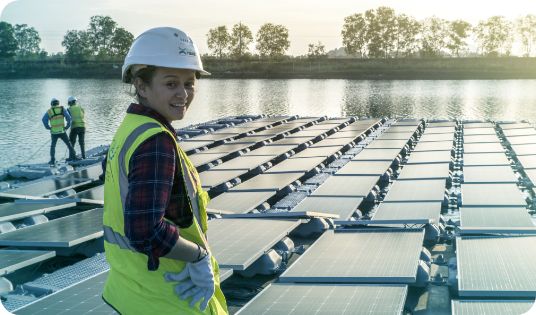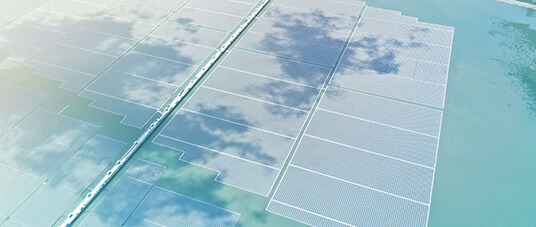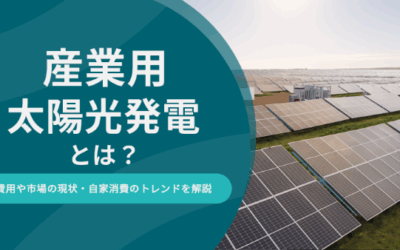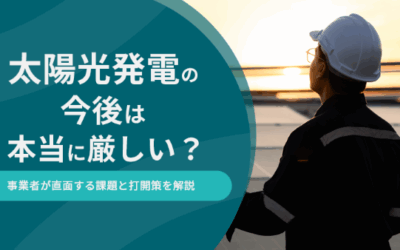
What could be the risks and consequences of poor design or execution of floating solar installations on hydro dams?
THE FIRST CHALLENGE: AVOIDING THE LOSS OF GENERATION
The efficiency of floating solar plants can be compromised by several factors:
- When panels are wrongly fixed, several issues can happen and that starts with the micro-crack on modules, often undetectable, which can compromise the integrity of solar panels and their ability to convert sunlight into electricity.
- Then, poor cable management can lead to exacerbated energy losses and potential faults that disrupt power transmission. Inappropriate modules can reduce sunlight exposure, impacting overall energy output.
- Moreover, environmental aspects can lead to panel degradation and reduced performance over time.
THE RISK OF INCREASING THE OPEX DUE TO COMPONENTS REPLACEMENT
It is important to bear in mind that extra operational expenditure (OPEX) can be avoided if the design and implementation of the floating solar plant are correctly managed with a strong attention to the site characteristics analysis. Considering the importance of the anchoring design in the floating photovoltaic panels, an optimal installation would prevent them from drifting or becoming unstable in the first place. Inadequate materials can lead to corrosion, degradation or even potential failure, which will obviously require replacement and repairs extra costs.

THE IMPACTS OF POOR FLOATING MATERIAL ON THE WATER QUALITY
Indeed, the use of poorly formulated polymer and contaminated post-consumer-recycler (PCR) materials can degrade over time if they are inappropriate or have not been properly tested beforehand. That is why, it is important to pay attention to the raw material used in the floating solar structure for several reasons:
- First, to ensure the reliability and durability of the project thanks to high quality HDPE which will last through years
- Second, to limit the impact on the fauna and flora.
HOW TO AVOID PARTIAL OR FULL STRUCTURE ISSUES?
The floating solar technology emerged only 15 years ago, with 80% of projects commissioned, within the last 5 years. Among the 1000 operational projects, only 4% of them experienced severe damages. Those took place during extreme weather conditions (storms, high winds conditions, flood…). The floating solar systems could experience an unexpected level of damage due to the global warming. We must therefore take these weather conditions into account in the design of the installation and its anchoring. Replacements and repair costs could run into millions of euros, in addition to high penalties for losses of generation.

What are the key basis for floating solar system on a Hydro dam?
SELECT HIGH QUALITY FLOATING SOLAR TECHNOLOGY
A limited range of products ensure quality and that is at the core of Ciel & Terre International’s missions. Our expertise is synonymous with high standards. We constantly carry out physical tests on our products to discover their limitations and improve them. For instance, we perform strength and stress resistance tests, as well as specialized assessments like UV exposure studies to evaluate the materials durability against sunlight. Then, we conduct essential wind and wave studies to understand how our floating solar panels react and perform under various weather conditions.
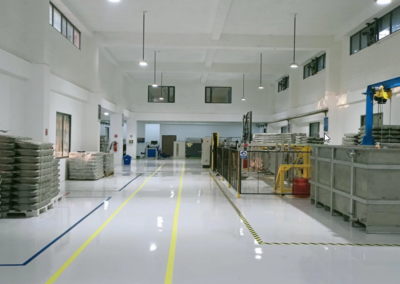
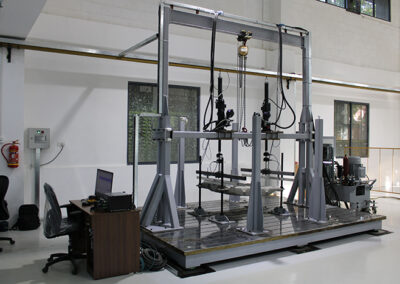
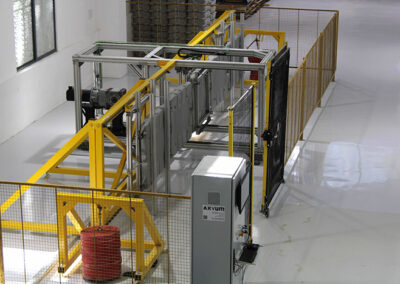
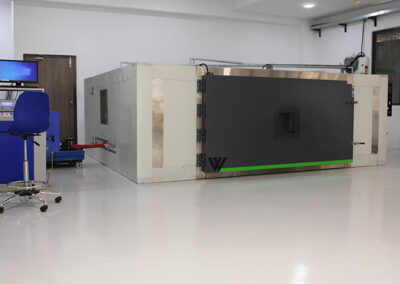
PRIORITIZE SITE CONDITION ANALYSIS FOR YOUR FLOATING SOLAR PROJECT’S LONGEVITY
In order to provide efficient products, you need beforehand to define the right environmental load and safety factors. To do so, you need to study the winds speeds and waves conditions (strength, fatigue…). Moreover, specific designing should be done on anchoring systems, to resist to the water conditions, fluctuating levels, and potential waves actions.
What are the main challenges for floating solar on Hydro dams?
THE MAIN CHALLLENGE IS THE WAVES FATIGUE
Constant waves exert stress, friction, and millions of bending cycles on floating solar structures, causing material fatigue. Over time, this fatigue can lead to cracks and failures at floats interconnection points, posing serious risks to the integrity of the installation. To mitigate this, Ciel & Terre employs laboratory tests and numerical simulations to predict wave impact and structural durability over a 25-year lifespan.
If analyses suggest potential damage, installing floating wave attenuators is recommended. These structures can reduce wave energy and help protect the FPV systems, offering a cost-effective solution compared to fixed options.

THE ANCHORING CHALLENGES
The anchoring systems presents various challenges due to factors like:
- Deep water (often over 30 meters),
- uneven reservoir beds (tensions disparities in mooring lines and therefore overloading and potential failure),
- high slopes,
- rocky substrates,
- and obstacles in the water (for instance, trunks can restrict anchor design and mooring lines installations, essential to navigate such obstacles and ensure proper anchoring.)
Effective solutions must consider these conditions to ensure stability and prevent overloading of mooring lines. Techniques such as deepwater mooring systems and specialized anchors are necessary to adapt to these unique environments and ensure reliable anchoring.
THE GREAT FLOATING SOLAR POTENTIAL ON HYDRO DAMS REQUIRES CUSTOMISED FPV SOLUTIONS
Floating photovoltaic (FPV) installations on hydro dams offer immense potential for large-scale projects, but they come with significant technical challenges. Ensuring the structural integrity of these installations over a 25-year lifespan requires thorough fatigue analysis. Additionally, when the distance between the array and the shore is considerable, installing a specialized wave attenuator becomes necessary to mitigate wave impacts and protect the structure. By addressing these challenges through comprehensive analysis and appropriate mitigation measures, FPV projects on hydro dams can unlock their full potential as sustainable and efficient sources of renewable energy.
